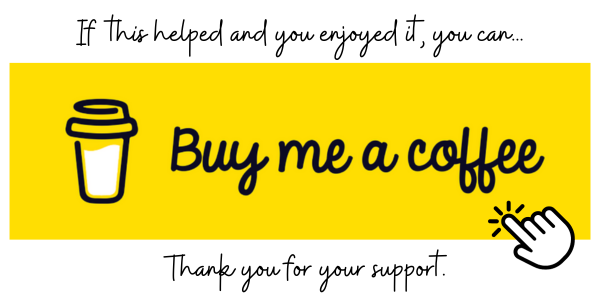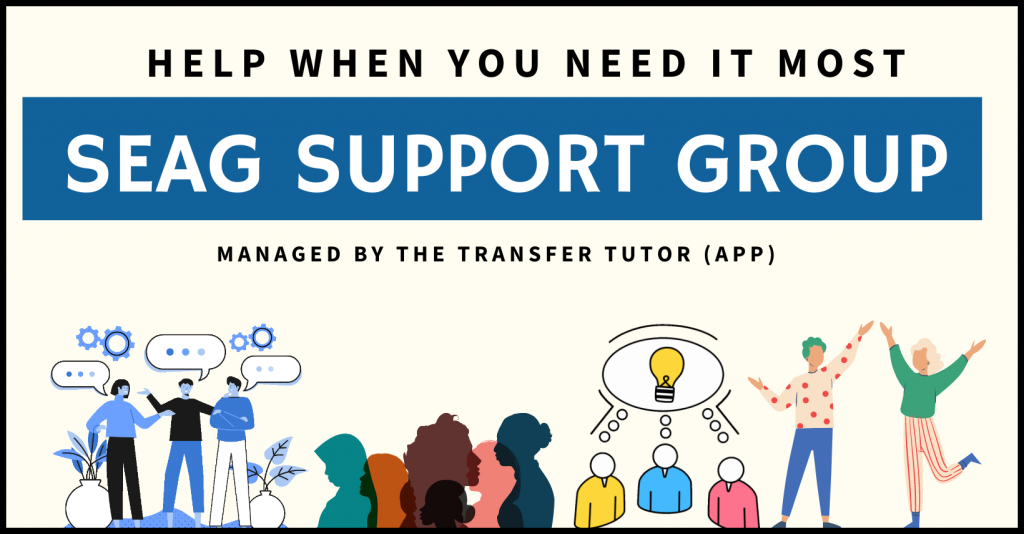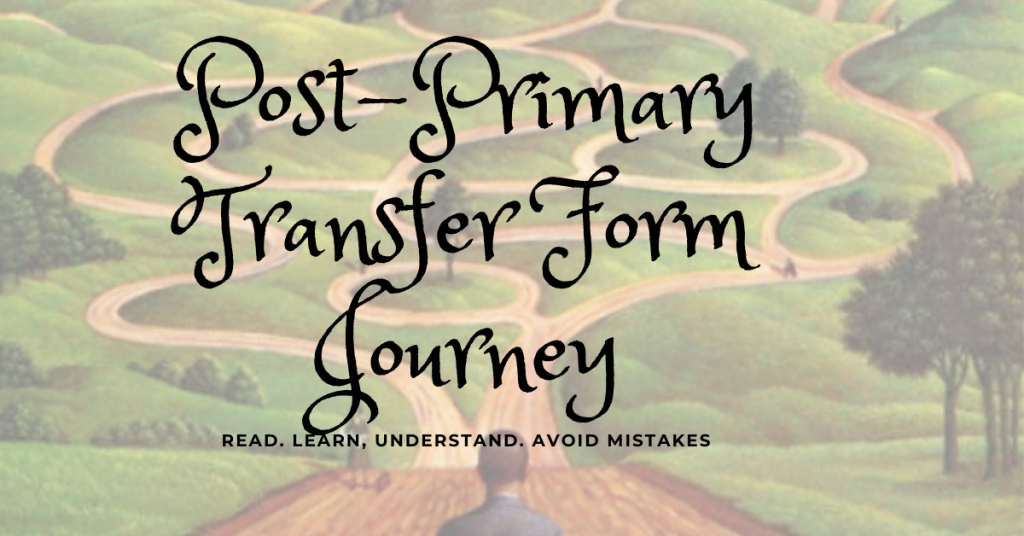
The Post-Primary Transfer Form Journey
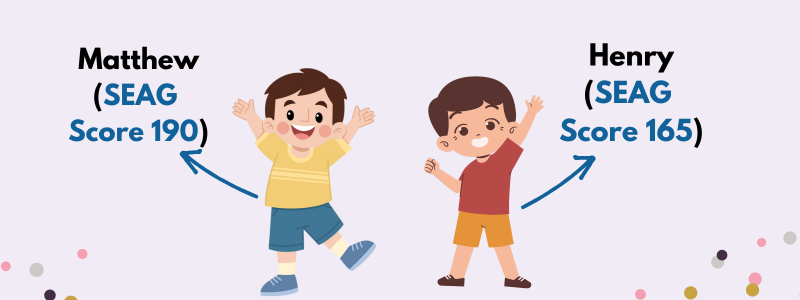
This blog focuses on explaining how post-primary schools allocate their placess and I’ll try my best to explain this in simple terms. Like everything in life, it is easy when you understand it.
Firstly, let’s take an example of Matthew first who got 190 in his SEAG test and the choices he made on his post-primary transfer form (completed online to the Education Authority (EA) were:
- First Choice – New York Grammar School
- Second Choice – Amsterdam Grammar School
- Third Choice – Wales Grammar School
- Forth Choice – France High School
Round 1: All Forms Go To First Choice School
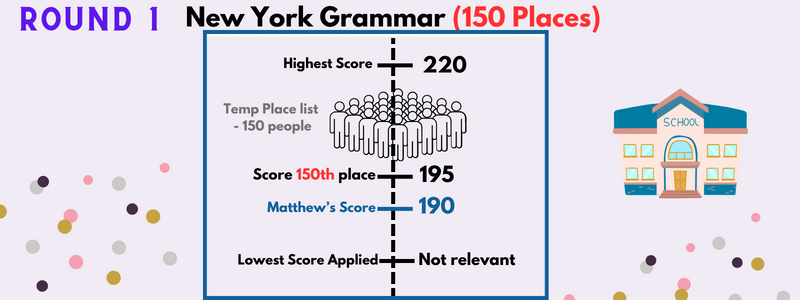
At this stage, the school begins to compile a list of names on their ‘temporary place-list’.
If they have more applications than spaces, they will use their admission criteria to reduce the numbers.
Transparent admission criteria is published on the Admission Criteria Blog so make sure you are familiar with it for every school you are considering (grammar and high schools).
OUR EXAMPLE:
Matthew’s First Choice was New York Grammar School and after reviewing all their applications in round one, they placed all the names in descending SEAG TSAS score order (in line with the admissions criteria) and filled all their places down to their 150th place and at that point and the lowest SEAG score was 195 so at this point Matthew was not offered a place.
Round 2: Moving To Second Choice School
So, if the form isn’t successful in Round 1, it will move on to the second choice on your post-primary transfer form.

OUR EXAMPLE:
The second choice school, Amsterdam Grammar School considers Matthew’s application. They have started their own temporary place-list from Round 1 and they have people on their list with SEAG TSAS scores from 180, so they are happy to put Matthew on their list (for now) because his score is greater than their current lowest.
By the end of Round 2, Matthew and others who have now taken places and have pushed up the current lowest score of Amsterdam Grammar to 182 and a number of other people (with TSAS 180 and 181) will now be moving out of Amsterdam and their form journey will move along to their second choice (as they’ve been in place since Round 1).
This will also be happening in Matthew’s original First Choice school (New York Grammar School) and although their lowest score was originally 195, it could be higher now with Round 2 completed.
Round 3+ (4, 5, 6 etc.): Iterative Process Until All Applications Have Settled
Post-primary forms will continue and in some rounds people will enter the place list and push the score up and this might displace other candidates who will move to the next school on their list.
This continues along this thread until all applications have settled and the remaining applicants are the ones who have best met the admission criteria for their final school (be that an SEAG score for Grammar or non-academic criteria for High School).
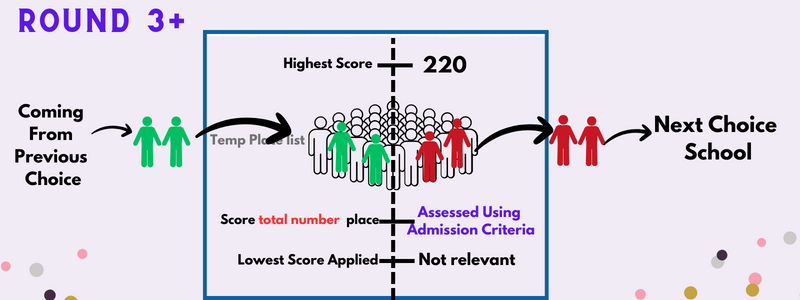
OUR EXAMPLE:
Luckily, our (fictitious) Matthew stayed at Amsterdam Grammar (in case you were worried about him) and loved it, and (importantly) this third and forth choice schools didn’t even see his application as he secured his second place!
Henry’s Journey With Score Of 165
Matthew’s friend, Henry followed through the same journey above but unfortunately he SEAG score wasn’t at the level to secure him a grammar school place this time, but he was ok with that and was happy to go to the local high school with his brother.
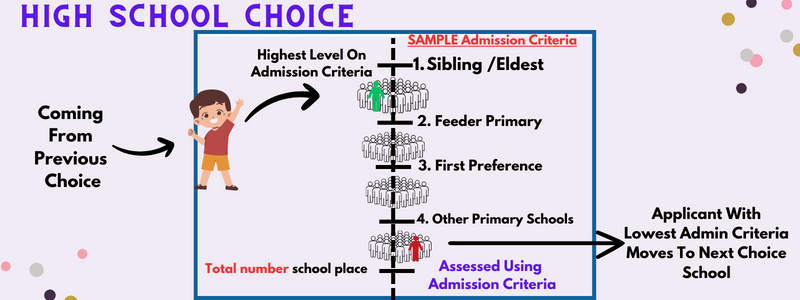
OUR EXAMPLE:
So, in our example, Henry’s application is presented to the the high school and they assess his application based on their admission criteria. As he has a brother at the school already and ‘sibling’ is Criteria 1 for this High School, Henry is able to secure a place in this group.
Therefore, Henry secures a place at the high school because:
- he meets the top criteria (sibling) in this school’s admission criteria
- and first preference wasn’t required in this school’s admission criteria,
When this happens, another applicant (at the very bottom of the admission criteria) moves onto their next choice school for their post-primary transfer application to be considered further.
What If My Child Is ‘Unplaced’?

Being ‘unplaced’ basically means the child has run out of school choices and has not been able to gain a place in any school.
This happens when your child’s application is compared to other applicants for that school but they weren’t higher in the admission criteria (for the number of places in the school) and this will either be an SEAG score for grammar or non-academic criteria for high school.
For example in 2019, 226 children were unplaced in Northern Ireland, so it does happen.
If your child is unplaced, they receive a letter from the Education Authority advising that their application has not been successful in securing a place and the letter is accompanied by a list of schools that currently still has places available and you’re asked to choose one from the remaining spaces.
From this point, the allocation of remaining places happens on a first-come first-served basis so parents must act quick in order to get a secured place for September and it can be a difficult time for the whole family and something that should be avoided by ensuring you have a good range of schools in your list including high schools which you know you’ll have a good chance of success.
The Transfer Tutor Online Quizzes Is The Perfect Revision Tool For The New SEAG Test!

The Transfer Tutor App is an online site dedicated to providing fun and interactive quizzes aligned directly to the new SEAG specification. All quizzes are broken down into manageable topics and can be done on any mobile or tablet device, so it’s an great way for kids to learn and prepare for the test.
There are many, great features including (but not limited to):
- Quizzes broken down into specific English and Maths topics, to allow for focused learning and the ability to hone in on areas of weakness.
- Mobile friendly and works on any internet device.
- ‘Hint’ option supports the child’s learning. For example, in question about calculating area of an irregular shape, the hint will say, “Break it into two” – enough to keep the child going but teaching them for future, similar questions.
- The Leaderboard at the end makes the child feel like they’re playing a game and having friendly competition.
- Good use of colour and graphics which makes it exciting.
- Parents receives a progress email at the end to let them know how their child did.
How To Buy
All normal licences are a simple, one-off payment (except the monthly subscription of course) and they can be purchased in confidence through a Apply Pay, Google Pay or a normal bank card.
Licences are purchased depending on the length of time required and as additional years are only charged at £15 per year, it’s worth considering a longer licence if you have a younger sibling.
Simply choose the licence you need depending on the length of time you need access, click on the blue box, pay and then you’ll be off within minutes.
For any further questions, please contact me or check out the Frequently Asked Questions page.
One-off, Great Prices
Google Reviews:
Check out the Google Reviews to read what other customers felt about The Transfer Tutor.
Spoiler alert – all the kids (the most important people) and parents love it!
Social Media Links – Keeping Up To Date

Follow or like The Transfer Tutor on your social media channel of choice and ensure you never miss a beat with the whole transfer process, handy tips, advice, special offers and competitions.
Click below for your preferred channel or search for @TransferTutorHQ wherever you are.
Free Facebook Group
You may have read in the reviews about people referring to the Facebook Support Group and this is certainly a great place to keep informed, ask questions, get support and keep up-to-date with anything happening in the transfer space.
It’s free to join but please ensure you have a genuine Facebook profile picture (ghost pictures are not approved as not deemed authentic) and then simply click here and answer the simple questions -> Join Facebook Group.
